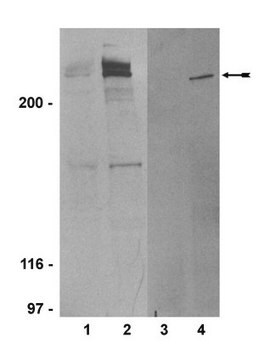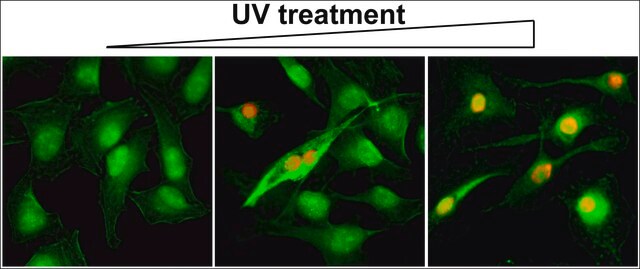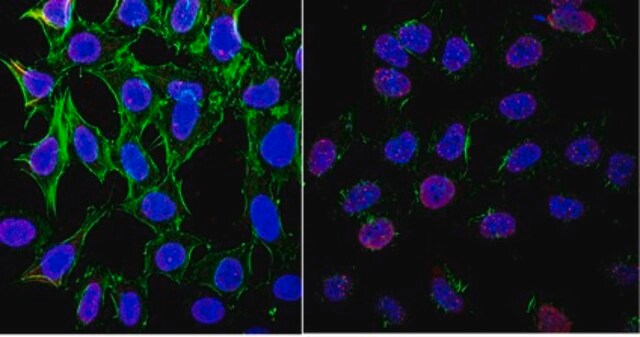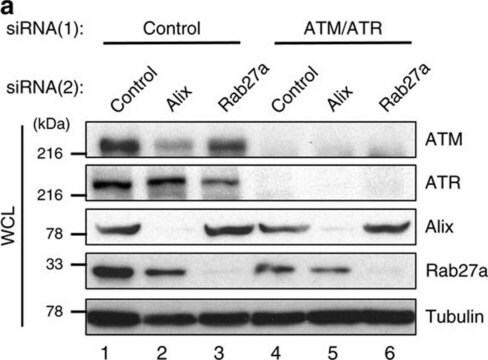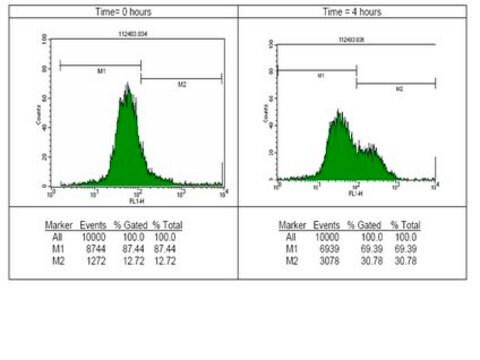MAB3806
Anti-ATM phosphoSer1981 Antibody, clone 10H11.E12
clone 10H11.E12, Chemicon®, from mouse
Synonim(y):
Ataxia Telangiectasia Mutated
About This Item
Polecane produkty
pochodzenie biologiczne
mouse
Poziom jakości
forma przeciwciała
purified immunoglobulin
rodzaj przeciwciała
primary antibodies
klon
10H11.E12, monoclonal
reaktywność gatunkowa
mouse, human
producent / nazwa handlowa
Chemicon®
metody
immunocytochemistry: suitable
immunoprecipitation (IP): suitable
western blot: suitable
izotyp
IgG1κ
numer dostępu NCBI
numer dostępu UniProt
Warunki transportu
wet ice
docelowa modyfikacja potranslacyjna
phosphorylation (pSer1981)
informacje o genach
human ... ATM(472)
Opis ogólny
Specyficzność
Immunogen
Zastosowanie
Epigenetics & Nuclear Function
Cell Cycle, DNA Replication & Repair
Immunocytochemistry: Foci are detected in irradiated human and mouse fibroblasts.
Immunoprecipitation: The antibody immunoprecipitates ATM from irradiated human and mouse cells.
Optimal working dilutions must be determined by end user.
Postać fizyczna
Przechowywanie i stabilność
This antibody and certain aspects of its use are disclosed and claimed in pending U.S. Patent Applications published as U.S. Patent Publication Nos. 2003/0077661 and 2003/0157572.
Komentarz do analizy
Irradiated normal Human fibroblasts (no reactivity against non-irradiated cell extracts)
Inne uwagi
Informacje prawne
Oświadczenie o zrzeczeniu się odpowiedzialności
Nie możesz znaleźć właściwego produktu?
Wypróbuj nasz Narzędzie selektora produktów.
polecane
Kod klasy składowania
10 - Combustible liquids
Klasa zagrożenia wodnego (WGK)
WGK 2
Temperatura zapłonu (°F)
Not applicable
Temperatura zapłonu (°C)
Not applicable
Certyfikaty analizy (CoA)
Poszukaj Certyfikaty analizy (CoA), wpisując numer partii/serii produktów. Numery serii i partii można znaleźć na etykiecie produktu po słowach „seria” lub „partia”.
Masz już ten produkt?
Dokumenty związane z niedawno zakupionymi produktami zostały zamieszczone w Bibliotece dokumentów.
Nasz zespół naukowców ma doświadczenie we wszystkich obszarach badań, w tym w naukach przyrodniczych, materiałoznawstwie, syntezie chemicznej, chromatografii, analityce i wielu innych dziedzinach.
Skontaktuj się z zespołem ds. pomocy technicznej